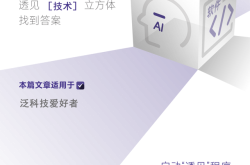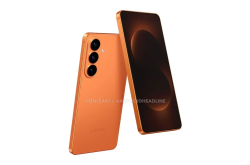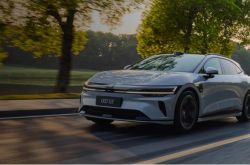Exploring the 2025 World Robot Conference: Key Highlights of the Advanced Humanoid Companion Robot GR-3
![]() 08/08 2025
08/08 2025
![]() 576
576
On August 6, 2025, two days before the World Robot Conference kicked off (August 8), Fourier Intelligence unveiled its groundbreaking full-size humanoid Care-bot, GR-3, in Beijing. Designed with a focus on interactive companionship and featuring "touchable" capabilities, GR-3, the third-generation intelligent humanoid robot in the GRx series, brings the concept of "warm technological companionship" from theory to reality through its soft skin material design and comprehensive interaction system.
I. GR-3 Product Design Philosophy
1. Exterior Design
The exterior of GR-3 is meticulously crafted around the core concepts of "affinity" and "safety," enhancing the user experience of "warm technological companionship" through multi-dimensional design:
In terms of appearance, it boasts lively brown eyes, gentle facial curves, a balanced height with a rounded form, and natural body language, creating a relaxed, engaging, and approachable robot image that minimizes the mechanical feel, reducing users' sense of alienation and fear.
In terms of sensory experience, it adopts a warm Morandi color scheme, combined with covering materials and the eco-friendly "GFOAM" soft padding interior, providing users with a soothing and intimate visual and tactile experience.
2. Main Body Structure Design
Structurally, GR-3 stands at 165cm and weighs 71kg, offering up to 55 degrees of freedom to support highly anthropomorphic limb expressions. By optimizing the head space and axis position, it achieves a compact and agile structural design.
Furthermore, it employs a modular design, efficiently integrating various sensing and computing modules, ensuring both aesthetic appeal and practicality, scalability, and laying the groundwork for versatile human-robot interaction scenarios.
Regarding the battery system, GR-3 incorporates a dual-battery hot-swap architecture combined with a dynamic energy distribution system, enabling seamless switching and extending single-charge endurance to 3 hours. This design supports uninterrupted power supply and battery replacement, reducing the risk of surge currents and arcs, thereby ensuring 7x24-hour continuous operation capability and reliable energy supply from the hardware level.
3. "Human-Centered" Design Philosophy
Fourier Intelligence, with a rich history in developing rehabilitation robots, adheres to the core philosophy of "empowering people with robotics technology." Cai Yusheng, Director of Product Research and Development at Fourier Intelligence, stated at the GR-3 launch event that GR-3 is the culmination of GR-1, GR-2, and the open-source robot Fourier N1, with previous optimizations in algorithms, motion control, and core hardware components reflected in its performance. For instance, its enhanced interactive functionality is built upon the stable base system optimized and improved upon GR-1 and GR-2.
Every aspect of GR-3's design embodies Fourier Intelligence's "human-centered" philosophy, aiming to become a social companion that understands emotions and conveys kindness, using natural interaction methods in public service spaces to forge warm human-robot emotional connections and intelligent collaboration.
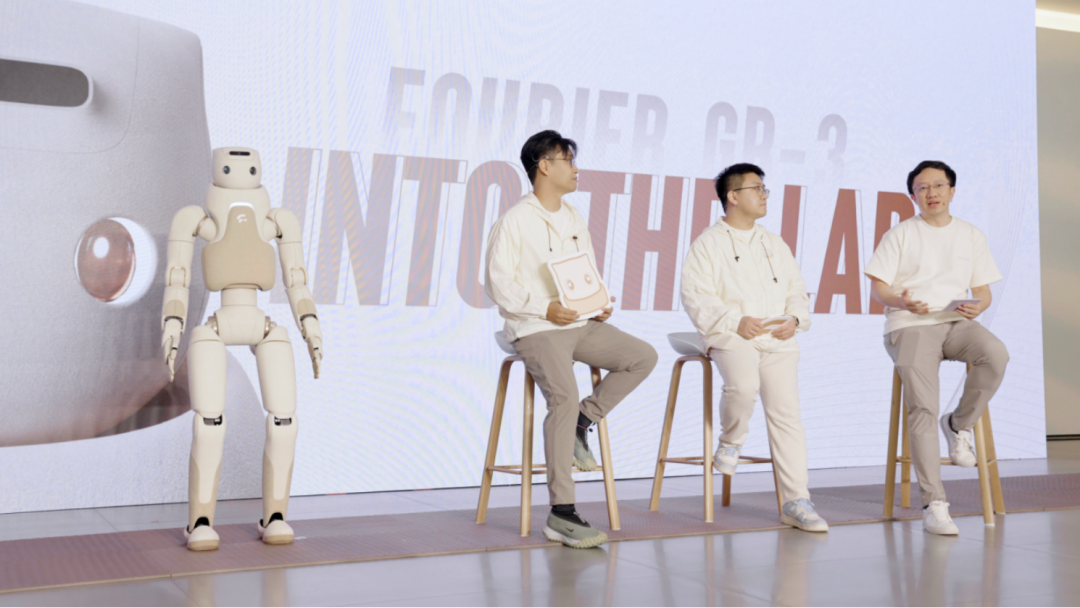
Technical roundtable discussion during the GR-3 launch event (Image source: Fourier Intelligence)
During the technical roundtable discussion at the GR-3 launch event, Gu Jie, founder and CEO of Fourier Intelligence, posed a question to Cai Yusheng, Director of Product Research and Development, and Zhong Zhengjie, Director of Product Design: "The 'human-centered' philosophy is the direction I initially set for the GR-3 project. From your perspective, what does 'human-centered' mean?" The two experts provided vivid explanations from their respective viewpoints.
Zhong Zhengjie emphasized that for him, "human-centered" not only considers usage scenarios and functions but more importantly, realizes "human-centered human-robot interaction." For example, they spent considerable time adjusting the "blinking" rhythm to make GR-3 appear less mechanical and capable of "eye contact." They aspire for people not to accommodate machines but for machines to assist like partners, creating truly humanized experiences.
Cai Yusheng elaborated from a technical development standpoint: "We implement this philosophy by delivering products that must possess complete functionality, scalability, and ease of development to support both professional and non-professional users. Especially for non-professional users, it must be easy to learn, use, and get started. At the same time, all reliability mechanisms are defined and designed by us, ensuring that users do not feel the abrupt mechanical feel when interacting with the robot." This is a critical aspect the R&D team must focus on in the development of each module, subsystem, and full-system iteration, and it is also the practical implementation of the company's creed.
4. Building a Developer Ecosystem
GR-3 further enhances the developer experience. Fourier Intelligence places great importance on the developer experience, and based on feedback from previous generations of users, GR-3 optimizes the development framework to support algorithm development using a server-client architecture. Whether robot researchers, industrial automation engineers, or AI software developers, they can quickly get started and efficiently customize diverse applications, driving robot technology innovation.
In the future, Fourier Intelligence will also provide interaction APIs for scenario developers, continuously lowering the usage threshold, promoting the personalized implementation of robots in real-world scenarios, and making technology truly serve emotional connections.
II. Three Core Highlights of GR-3
GR-3 pursues product characteristics of affinity, friendliness, and warmth, aligning with Fourier Intelligence's original intention of "human-centered, serving people" since its inception – all designs revolve around people and scenarios. Specifically, the functions of GR-3 can be highlighted in three core areas: the full-sense interaction system, anthropomorphic movements and expressions, and overall reliability.
1. Full-Sense Interaction System
GR-3's full-sense interaction system integrates auditory, visual, and tactile modules to achieve more natural and anthropomorphic emotional interactions through coordinated feedback. Additionally, the system incorporates a dual-path response mechanism of "fast thinking" and "slow thinking." "Fast thinking" corresponds to the robot's "instinctive reaction," such as immediately switching behavior priority to respond to a sudden touch (like its abdomen being touched) during voice interaction or face recognition tracking. This "instinctive layer" is similar to humans' subconscious blinking when a fly approaches, implemented through hardcoding.
When the same command is triggered multiple times (e.g., continuous questioning, multiple touches), the "slow thinking" mode is activated. The large model reasoning engine processes complex semantics, interaction history, and trigger characteristics to generate a more natural and scenario-adapted composite response.
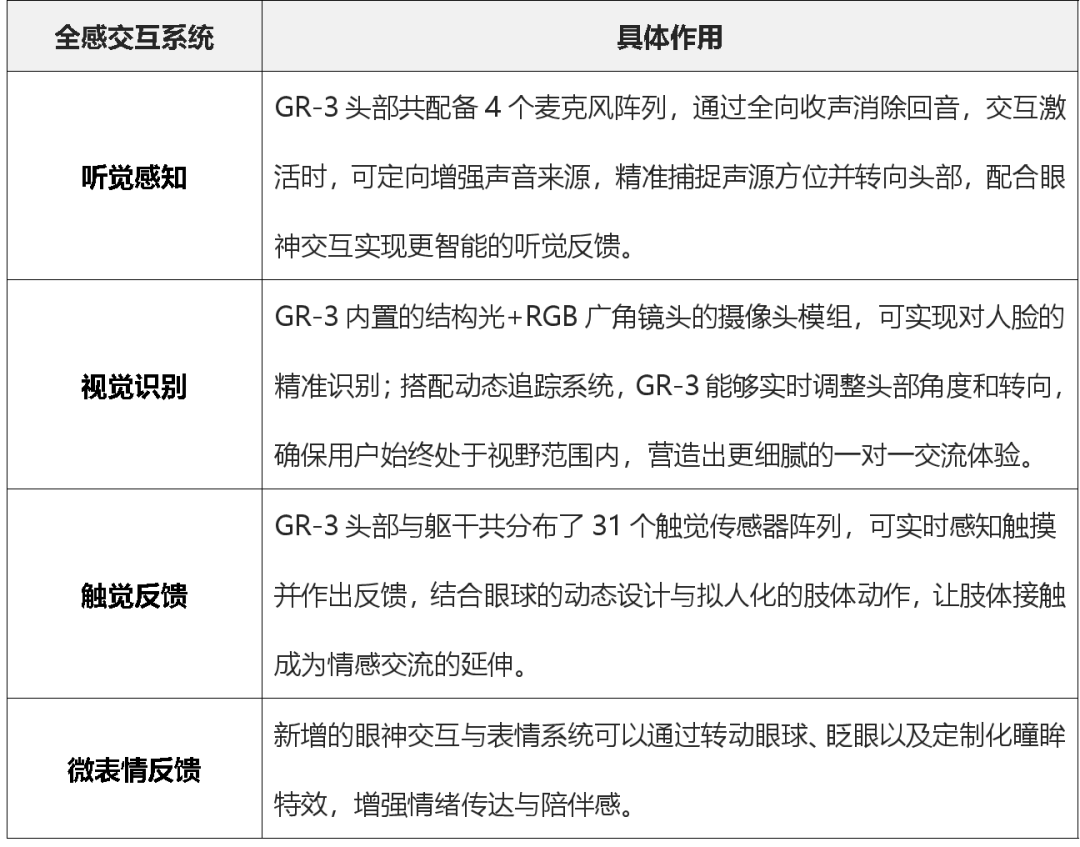
Cai Yusheng mentioned that Fourier Intelligence has been deeply engaged in the field of rehabilitation and healthcare for a decade, gradually refining a broader concept of "interaction" during this period. In actual scenarios of interacting with patients, they found that "interaction" transcends verbal communication, encompassing adjusting communication strategies through observation, conveying information through touch, and even actively guiding patients through body language and clinical responses – this realization underscored the vastness of "interaction's" connotation.
To truly integrate the new generation of robots into practical scenarios, this broad interaction must be implemented. GR-3 has made a bold attempt in this regard, which is divided into two steps:
"The first step is to add a 'tactile' modal input based on existing visual and acoustic perception. This posed significant challenges to the team: although the initial product definition and goals were detailed, implementation needed to consider volume limitations, functional realization, task completion, and sensor stacking. Therefore, it was crucial to clarify at the project initiation: how to achieve comprehensive sensor stacking and integration at the hardware level? How to reserve interfaces in the software system?"
"The second step is that given the tight project schedule, the team continued Fourier Intelligence's pace in the humanoid and general robot race – rapid execution and rapid iteration. Under this pace, we completed the sensor debugging and link establishment of the entire system, ultimately solving the issues of mass production and large-scale expansion, making robot technology accessible to more users and fulfilling our initial intention."
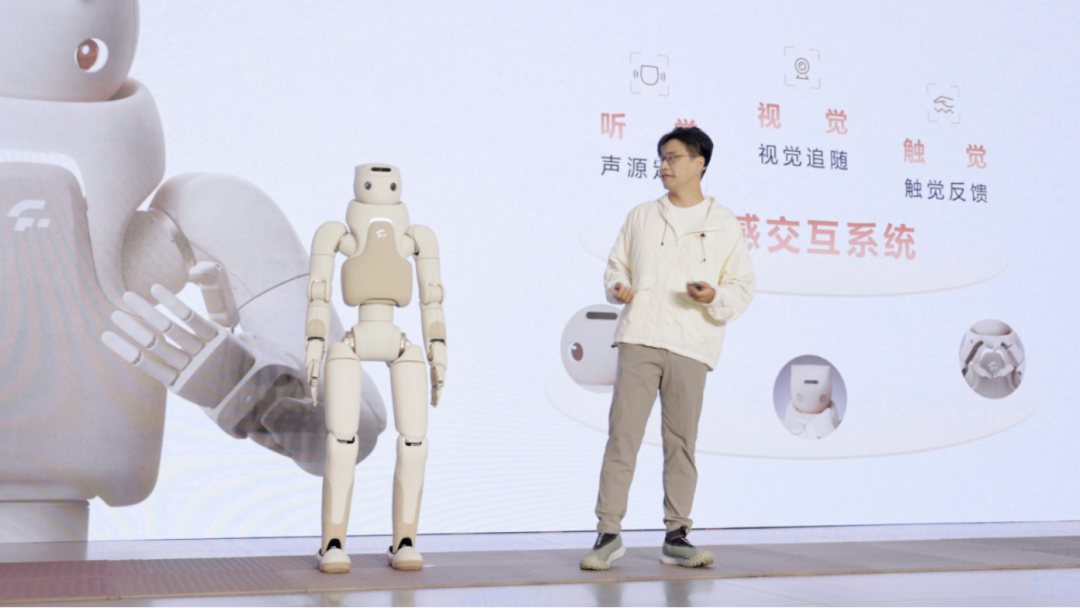
GR-3 full-sense interaction system (Image source: Fourier Intelligence)
2. Anthropomorphic Movements and Expressions
1) Standby State Design: Making Anthropomorphic Behavior More Natural
GR-3 is designed with an "NPC mode," ensuring that even in standby mode, it continuously conveys a state of "observing" and "thinking." This design not only enhances aesthetics but also fosters trust and naturalness between humans and machines.
Zhong Zhengjie said, "Early testing revealed that when the robot starts up, it can easily make people feel abrupt – because people find it difficult to judge its status. This prompted us to convey 'status information' through additional shallow interactions, leading to the design of a mode similar to an 'idol standby animation' so that users can intuitively recognize its standby status."
"During the interaction process, to enable GR-3 to convey emotional value, we needed to reconsider the way technology is implemented. We made a new attempt for this: relying on the existing software and hardware platform, we continuously added 'subconscious reactions' to further enrich the interaction effect," Cai Yusheng added.
2) Demonstration of Multiple Gaits: Expression Beyond Functionality
Humans exhibit different gaits in various scenarios, and robots should be no different. Some prioritize speed, some focus on stability, and others prefer smooth steps. The development of GR-3 is based on this idea, exploring ways for robots to match corresponding walking postures in different situations.
Regarding this, Gu Jie said, "For example, in the standard natural gait, its arms follow naturally, allowing simultaneous adjustments such as squatting, bending, and leaning back to adapt to different spaces; the anthropomorphic gait of straight-legged walking presents a more affable and natural image; there is even a funny gait similar to a 'duckling,' injecting emotion into the gait through cute movements with legs spread apart. Such designs make the robot's movements free from the cold mechanical feel and possess 'expressiveness,' allowing people to perceive the robot's current 'state' from its walking posture."
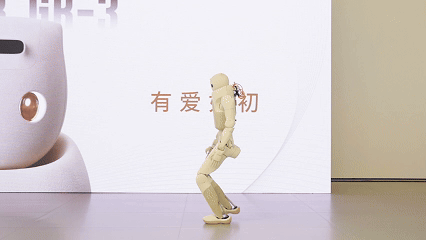 Natural gait (Image source: Fourier Intelligence)
Natural gait (Image source: Fourier Intelligence)
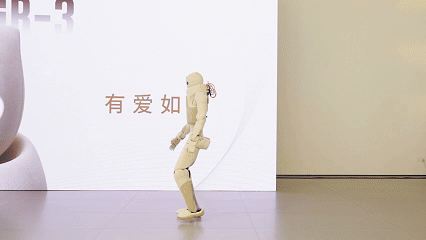
Upright walking (Image source: Fourier Intelligence)
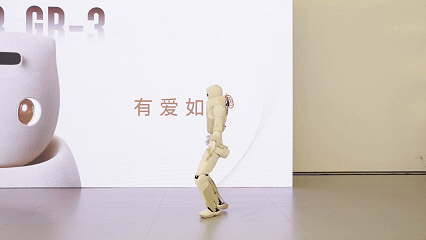
Duck walk (Image source: Fourier Intelligence)
He further added, "To achieve this goal, we must constantly try various algorithms, adjust parameters, and observe and imitate various human behavior patterns. These achievements are inseparable from the hard work of our R&D team."
Additionally, Cai Yusheng noted that at the beginning of GR-3's motion control development, the team discussed how the motion control level needed to be adapted for this product with significant changes in appearance, interaction, and functional design. After a quick and comprehensive discussion, they found the overall difficulty to be extremely high, and three core ideas emerged during the process:
Firstly, from the outset, they emphasized deep communication between the algorithm, hardware, and product definition teams to achieve forward design through sufficient pre-planning. To enable the robot platform to support the continuous emergence of new gaits and new forms of expression, the team researched design documents and basic principles of humanoid and general robots over the past 30 years, selecting configurations based on this to reserve space for future expansion of more expressive power.
Secondly, focusing on motion control development itself, for each individual motion control function, different forms such as model control, reinforcement learning control, and imitation learning control may be adopted, breaking free from the constraints of the naming of technical projects. The core is to atomize movements and task forms as much as possible.
Thirdly, in system construction, they focused on the organic integration of multiple atomized skills, striving for the robot's movements and form displays not to be based on rigid modes or task switching (such as displaying specific actions at fixed times) but rather being able to autonomously decide the form of expression based on actual interactions with the outside world.
3. Overall Reliability
The "human-centered" experiences such as the naturalness of perceptual interaction, the anthropomorphic standby state and walking, are all built on the foundation of overall reliability. If the robot is unstable and unreliable, no matter how ingenious the design, it will lose its meaning.
Cai Yusheng elaborated, "Our team comprises many individuals hailing from the industrial sector. For us, the dependability of our systems and designs stands as an enduring and central concern. While this objective is ambitious and necessitates persistent effort, its fulfillment must be meticulously addressed in the nuances of our work."
"Firstly, the hardware team underscores the importance of quantifiable analysis in robot design during the development and team building of GR-3. As we progress, it is crucial to outline, prior to product implementation, the areas ripe for optimization in next-generation technology, the strategies for incorporating safety margins, and the iterative refinement path for the overall design language and structure."
"Secondly, at the software system level, we are in the process of transitioning our program and data link frameworks to a genuine 'robot operating system' (distinct from a Linux-based development platform). This transition demands meticulous planning of data links, the incorporation of redundancy mechanisms, the formulation of security protocols, and the establishment of emergency information handling solutions."
"Thirdly, with respect to active reliability control strategies, we have allocated significant development space, pivotal for future real-world interaction scenarios. For instance, ensuring the robot can reliably revert to a stable state or resume an executable state during emergencies will be a focal point of our future endeavors."
III. Selection of GR-3 Commercialization Scenarios
Building upon functional enhancements, Fourier Intelligence imbues GR-3 with companionship attributes, striving for emotional presence and enhanced interactive experiences while maintaining core functionalities. Fourier Intelligence has delineated the future trajectory and application aspirations of robots across multiple dimensions, including technological advancements, user experience, and commercialization:
Social Companionship: Emphasizing the emotional bond between humans and robots, suitable for settings like public spaces and educational environments. It assumes roles such as companionship for elderly individuals living alone and interactive playmates for children, fostering emotional ties through daily interactions, social engagements, and emotional support.
Auxiliary Care: Extending service functionalities rooted in emotional companionship, encompassing professional scenarios like mobility assistance, health monitoring, and rehabilitation training.
Gu Jie remarked, "Fourier Intelligence's core mission is to create robots that 'empower people.' Although we entered the market through rehabilitation, our focus extends beyond rehabilitation and elderly care. For instance, the GR-3 can also be deployed in manufacturing facilities to boost efficiency." He candidly acknowledged that the GR-3 is not yet ready for household deployment due to industry standards and regulations, issues that require long-term resolution. Nonetheless, this engaging, affectionate, and functional robot has laid a solid foundation for Fourier Intelligence's foray into household scenarios.

GR-3 Launch Event Venue
Regarding the choice of deployment scenarios for Fourier Intelligence's robots, Gu Jie responded, "Humanoid robots are inherently suited to human social life settings, but it is essential to prioritize the deployment of technology. Currently and for the foreseeable future, we must identify scenarios most conducive to technological deployment. The realization of household companionship scenarios will take time, whereas public service scenarios such as community rehabilitation and elderly care, tour guiding, and consulting are more feasible and expected to materialize sooner. This is the path Fourier Intelligence is prioritizing at present."
He further noted, "Currently, Fourier Intelligence's robot product matrix holds vast potential for application within the medical system. In the future, robots can become invaluable assistants to doctors, enhancing the efficiency of the medical system from patient admission, assessment, and training to remote rehabilitation follow-ups post-discharge."
Gu Jie also stated that Fourier Intelligence's technological research and development encompass both short-term breakthroughs and long-term goals: in the short term, it focuses on augmenting the efficiency of public service scenarios to alleviate arduous tasks; in the long term, it aims to integrate robots into communities, institutions, and even households, transforming them into human companions.
He emphasized that Fourier Intelligence does not solely pursue the intelligence and strength of robots but envisions them as an 'extension' of humans, evolving alongside them from mere tools to partners. Underpinning this vision is our core value: technology is a means, and serving humanity is the end. All innovations and breakthroughs must ultimately revert to the essence of 'making robots better serve people'—only by creating from a human-centric perspective can technology impart warmth, products exude vitality, and robots truly transform from 'machines' into 'companions by our side.' This is our current philosophy and the direction of our future endeavors.
Therefore, when the technology team undertakes innovations and breakthroughs, it is imperative to integrate a humanistic perspective to genuinely assist and empower people through robots.


